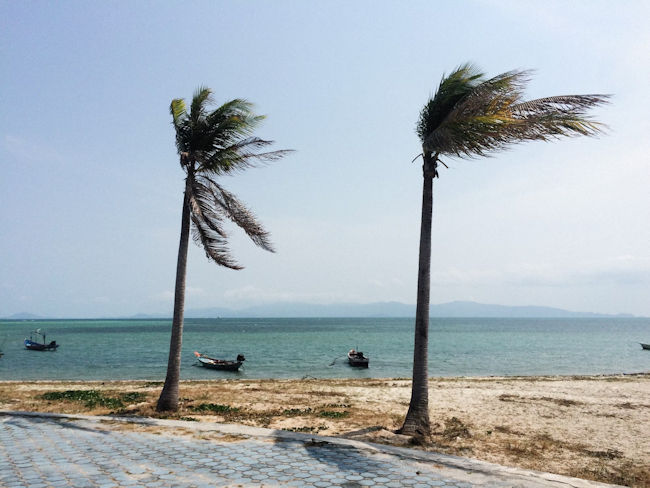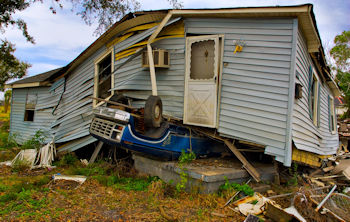
Disasters can strike at any time, and often, they come without warning. From hurricanes to earthquakes and wildfires, it’s crucial to be prepared to protect your home and car before disaster strikes. A disaster can cause irreparable damage to your property and possessions. Protecting your home and car during such times is important and could potentially help save lives. In this post, we’ll take you through some easy steps you can take to protect your home and car in the face of disaster.
#1 Review Your Insurance Policy
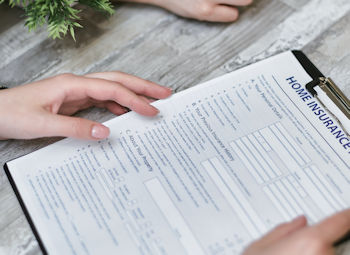
The first step to protecting your home and car is by reviewing both your home and car insurance policy. Ensure that it covers natural disasters and that you’re adequately insured. Contact your insurance agent to discuss the coverage options available to you. If your insurance policy doesn’t cover natural disasters, you should consider purchasing additional coverage to protect yourself. According to Forbes Advisor, “A standard home insurance covers all types of disasters except those that are specifically excluded.”
Typically Home Insurance Policies cover:
- Lightning
- House fires and Wildfires
- Wind and hail
- Volcanic eruption
- Ice, snow and deep freezes
- Falling objects such as tree branches
Typically Home Insurance Policies DON’T cover:
- Earthquake damage
- Flood damage
- Some Coastal areas Exclude Hurricane Wind Damage
If your area is prone to this type of disaster, you may want to get a supplemental policy that will cover that.
#2 Secure Loose Objects
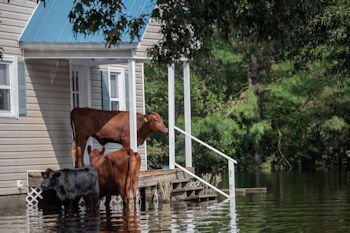
In the event of a disaster, loose objects such as outdoor furniture or potted plants can become dangerous projectiles that cause damage to your home and car should they end up getting thrown or sent flying by the wind. Securing these objects beforehand can prevent them from blowing around and causing damage. You can store outdoor furniture, grills, and trash cans inside, or you could anchor them down using sandbags or ropes. Some people with in ground pools put their patio furniture in the pool in preparation for a hurricane. (But not the grill of course).
Be sure to take special care to provide for pets and other animals.
#3 Prepare for Flooding
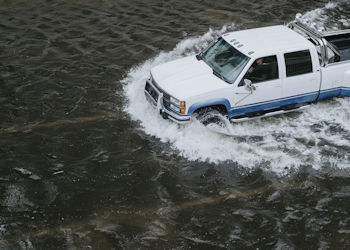
In case of a flood, it’s important to park your car on higher ground to prevent water damage. If you don’t have a high ground available, you can park your vehicle in a parking garage or up against a building to reduce the chances of your car becoming submerged. You may also want to consider purchasing flood insurance to protect your home and assets against water damage. The Federal government has a flood insurance program called National Flood Insurance Program (NFIP) and policyholders are eligible to receive up to $1,000 to purchase loss avoidance supplies like tarps, sandbags, and more.
Driving in deep floodwaters can be VERY dangerous. A sudden flashflood can wash your car away.
NFIP recommends that you:
- Install a water alarm and maintain a working sump pump to protect your basement, including a battery-operated backup pump in case of power failure.
- Clean your gutters prior to any heavy rain to avoid accumulation of water.
- Move furniture and valuables to a safe place, such as an attic or the highest floor of your home.
You can also purchase barriers like sandbags to reduce the likelihood of water getting in under doors etc. You can also create landscaping, ditches, and drainage that directs excess water away from your home to a safe location.
NFIP/FEMA created several informational brochures to help with Flood Preparation:
- Guide for Reducing Flood Risk
- Protecting Building Utility Systems From Flood Damage
- Protecting Manufactured Homes from Floods and Other Hazards
#4 Emergency Kit Preparation
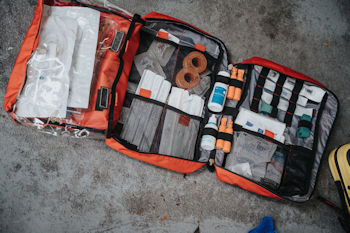
Prepare an emergency kit that includes first aid supplies, flashlights, batteries, and canned food. In case of an emergency, the kit will provide you with the necessary tools to survive until help arrives. Ensure that the kit is stored in a secure location in your home and that it’s easily accessible.
Ready.gov created this list for a Basic Disaster Supplies Kit. They recommend that you store it in airtight plastic bags and put your entire disaster supplies kit in one or two easy-to-carry containers such as plastic bins or a duffel bag.
- Water (one gallon per person per day for several days, for drinking and sanitation)
- Food (at least a several-day supply of non-perishable food)
- Battery-powered or hand crank radio and a NOAA Weather Radio with tone alert
- Flashlight
- First aid kit
- Extra batteries
- Whistle (to signal for help)
- Dust mask (to help filter contaminated air)
- Plastic sheeting and duct tape (to shelter in place)
- Moist towelettes, garbage bags and plastic ties (for personal sanitation)
- Wrench or pliers (to turn off utilities)
- Manual can opener (for food)
- Local maps
- Cell phone with chargers and a backup battery
Additional Emergency Supplies
Consider adding the following items to your emergency supply kit based on your individual needs:
- Soap, hand sanitizer and disinfecting wipes to disinfect surfaces
- Prescription medications. About half of all Americans take a prescription medicine every day. An emergency can make it difficult for them to refill their prescription or to find an open pharmacy. Organize and protect your prescriptions, over-the-counter drugs, and vitamins to prepare for an emergency.
- Non-prescription medications such as pain relievers, anti-diarrhea medication, antacids or laxatives
- Prescription eyeglasses and contact lens solution
- Infant formula, bottles, diapers, wipes and diaper rash cream
- Pet food and extra water for your pet
- Cash
- Important family documents such as copies of insurance policies, identification and bank account records saved electronically or in a waterproof, portable container
- Sleeping bag or warm blanket for each person
- Complete change of clothing appropriate for your climate and sturdy shoes
- Fire extinguisher
- Matches in a waterproof container
- Feminine supplies and personal hygiene items
- Mess kits, paper cups, plates, paper towels and plastic utensils
- Paper and pencil
- Books, games, puzzles or other activities for children
Wildfire Protection
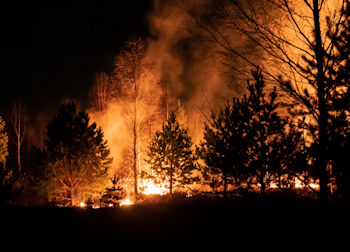
Ready for Wildfire is an organization that provides essential information on how to protect your home from wildfires. They recommend:
Keeping your property lean and green by creating a buffer zone around your house
- Use hardscape like gravel, pavers, concrete and other noncombustible mulch materials. No combustible bark or mulch
- Remove all dead and dying weeds, grass, plants, shrubs, trees, branches and vegetative debris (leaves, needles, cones, bark, etc.); Check your roofs, gutters, decks, porches, stairways, etc.
- Remove all branches within 10 feet of any chimney or stovepipe outlet
- Limit combustible items (outdoor furniture, planters, etc.) on top of decks
- Relocate firewood and lumber to Zone 2
- Replace combustible fencing, gates, and arbors attach to the home with noncombustible alternatives
- Consider relocating garbage and recycling containers outside this zone
- Consider relocating boats, RVs, vehicles and other combustible items outside this zone
For more information check out their website. Download their Homeowner’s Checklist to make your home fire-resistant inside and out.
Protecting your home and car in the face of disaster is important. With a little effort, you can minimize the damage caused by these events. Reviewing your insurance policy, securing loose objects, preparing for flooding or wildfires, and emergency kit preparation are just some steps to help protect your home and car. When it comes to natural disasters, it’s always better to be over-prepared than to be caught off guard. Stay safe!
You might also like:

